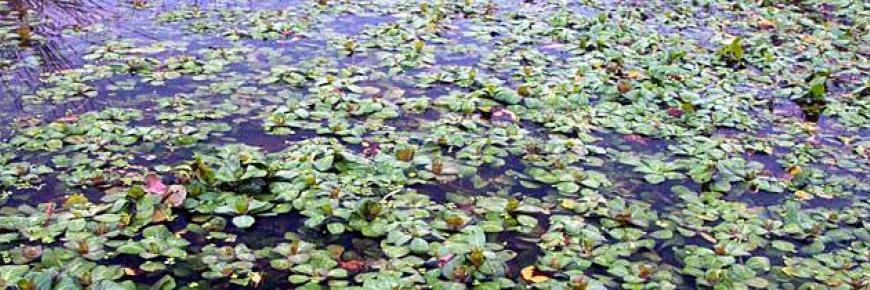Field Trials and Demonstration
Despite significant efforts to prevent their arrival and establishment, invasive non-native species continue to be introduced through a variety of pathways. Once an invasive species becomes established, and when rapid eradication is not possible, it is necessary to manage the species. This commonly means restricting further spread and eradicating it from localised areas, where methods are available to do this.
Work Package 3 (Field Trials and Demonstration projects) helped to develop more effective ways of managing some of the most problematic species in the Two Seas area. It will also disseminate the results of these trials and demonstrations, ensuring that information on the most effective ways to manage these species reaches those who need it.

Photo Credits: Canada Goose (GBNNSS); American Mink (Snowdonia National Park Authority); Topmouth Gudgeon (EA - Matt Brazier).
Invasive Animals
American Mink (Neovison vison) - The American mink was introduced to Europe to be farmed for its fur in the 1800s. Following a series of accidental and deliberate releases, the species soon established a number of feral populations. The impact of the mink is largely through predation; significantly reducing populations of ground-nesting birds and the European water vole. In Norfolk, RINSE helped to further expand the Norfolk Mink Control project, a county-wide project aiming to reduce mink populations in all catchment areas. The project owes its success to the many volunteer trappers who have agreed to host and monitor a mink raft and allow trapping on their land.
Invasive Geese - Populations of Egyptian goose (Alopochen aegyptiaca) have been increasing since their introduction to Europe in the 17th century. The impacts of this invasive bird include damage to agriculture, eutrophication of waters, trampling and overgrazing. In Flanders the total impact of Egyptian geese is now considered to be worse than the more well known Canada goose. Three RINSE partners worked together to develop better ways of managing geese populations: INBO, RATO and Inagro. In January 2013, a one-year field trial commenced inFlanders to explore different innovative options for the control of Egyptian goose. Methods tested included a floating trap with a live lure, a similar land-based trap and double clap net for larger populations.
Invasive Plants
Floating Pennywort (Hydrocotyle ranunculoides) - Capable of growing up to 20 cm a day, floating pennywort is extremely costly to both our environment and economy. Within Norfolk, the RINSE Lead Partner Norfolk County Council has successfully eradicated Floating pennywort from the River Waveney. This project, which began in 2009, used a combination of hand-pulling, herbicide and intensive monitoring to remove the plant from the river, preventing it from spreading into the Broads – one of the UK’s most valuable wetland areas.
Himalayan Balsam (Impatiens glandulifera) - This invasive plant has become a serious problem in many countries across Europe, with each RINSE Partner taking different steps to tackle it. Norfolk County Council, recently completed a source to sea survey of the River Bure using over 20 local volunteers. The data collected from this survey will be used to create a detailed distribution map for Himalayan balsam, highlighting the areas where action needs to be taken.
North American Oregon Grape (Mahonia aquifolium) - The North American Oregon grape is an evergreen shrub which has become a popular garden plant. However, with its strong clonal growth it can rapidly proliferate and overgrow native vegetation. This invasive plant has become a particular problem in coastal dune ecosystems where the root suckers of the plant stabilise sand, thereby radically changing the dynamic nature of the ecosystem. Despite the vulnerability of coastal dune habitats and the increasing problem of North American Oregon grape, little is known about management of this invasive plant. Therefore, within RINSE, an experiment was set up to determine the best control methods in three heavily infested dune reserves on the Belgian coast.
The Activity Report for Work Package 3 is available here in English, French and Dutch.
 Photo Credits: Floating Pennywort (GBNNSS); Himalayan Balsam (GBNNSS); Japanese Knotweed (GBNNSS).
Photo Credits: Floating Pennywort (GBNNSS); Himalayan Balsam (GBNNSS); Japanese Knotweed (GBNNSS).

